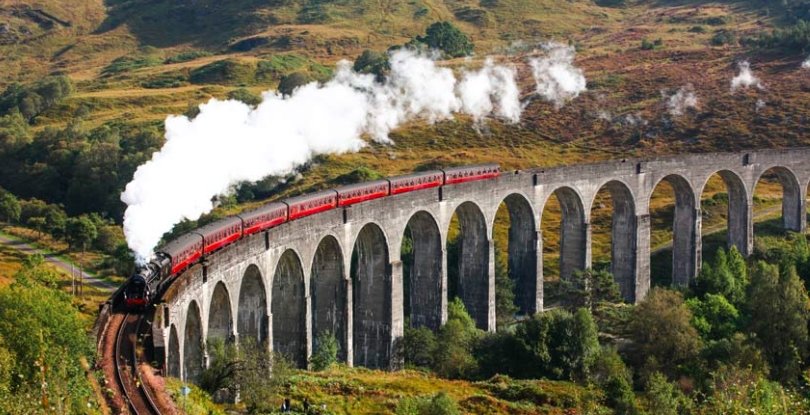Scotland’s West Highland Line, hailed as one of the world’s most scenic rail routes, offers breathtaking views of lochs, mountains, and moors from Glasgow to Mallaig or Oban. Yet in 2025, locals and regular travelers voice growing complaints about overcrowding, breakdowns, and poor service that mar the experience.
This iconic journey, featured in films like Harry Potter and Trainspotting, draws thousands of tourists each year for its dramatic landscapes. But recent issues, including flooded tracks and unreliable trains, have left residents frustrated and calling for urgent fixes.
The Magic of the West Highland Line
Travelers flock to the West Highland Line for its unmatched natural beauty. Starting in bustling Glasgow, the route winds through the rugged Scottish Highlands, passing ancient peaks and serene waters.
Many describe it as a bucket-list adventure. The line splits at Crianlarich, with one branch heading to the coastal town of Oban and the other to Mallaig, a gateway to the Isle of Skye.
In recent years, its fame has surged thanks to social media and travel shows. Riders often spot wildlife like deer and eagles while crossing famous spots such as the Glenfinnan Viaduct, immortalized in Harry Potter films.
The journey takes about five hours from Glasgow to Mallaig, offering a slow-paced escape from city life. As of 2025, ticket prices start at around 30 pounds for a one-way trip, making it accessible for day trippers and long-haul explorers.

Stunning Views That Captivate Riders
The route’s highlights include vast moors, shimmering lochs, and towering mountains that change with the seasons. In summer, wildflowers dot the landscape, while autumn brings fiery colors.
Key attractions draw repeat visitors. The line passes Rannoch Moor, a remote wilderness area, and Loch Awe, one of Scotland’s longest freshwater lochs.
- Glenfinnan Viaduct: A 21-arch structure offering panoramic views, especially during steam train specials.
- Corrour Station: The UK’s highest and most remote station, featured in films and surrounded by untamed nature.
- Ben Nevis: Glimpses of Britain’s tallest mountain near Fort William add to the thrill.
These elements make the trip unforgettable. Riders often share photos online, boosting its global appeal and turning it into a viral sensation.
However, the influx of visitors has strained the system. With tourism rebounding post-pandemic, trains fill up quickly, especially on peak days.
Growing Local Complaints in 2025
Locals in the Highlands express frustration over the line’s persistent problems. Overcrowding tops the list, with some trains running with too few carriages, forcing passengers to stand or sit on floors.
Recent floods and breakdowns have worsened the situation. Heavy rains in early 2025 closed sections of the track, stranding travelers and disrupting daily commutes.
Residents point to poor maintenance as a key issue. Bushes and trees obscure views, and branches sometimes hit train windows, startling riders.
Service disruptions occur frequently. Crew shortages and engineering works lead to cancellations, affecting both tourists and locals who rely on the line for work and errands.
One major gripe is the lack of support for ticket enforcement and passenger safety. Incidents of unruly behavior go unchecked, adding to the chaos on busy days.
Recent Incidents Highlight Ongoing Issues
In August 2025, multiple reports surfaced of packed trains where fights broke out over seats. Elderly passengers and families faced distress amid the crowds.
Flooding earlier this year echoed past events, like the 2023 deluge that dumped a month’s rain in a day, closing the line for inspections.
A table below outlines some key challenges based on 2025 data:
| Issue | Description | Impact |
|---|---|---|
| Overcrowding | Trains often run with insufficient carriages during peak times | Passengers stand for hours, leading to discomfort and conflicts |
| Breakdowns | Frequent mechanical failures and weather-related stops | Delays and cancellations disrupt plans for tourists and locals |
| Maintenance Gaps | Overgrown vegetation blocks views and damages trains | Reduced scenic appeal and safety concerns |
| Service Shortages | Lack of staff causes last-minute changes | Inconsistent reliability, frustrating regular users |
These problems have sparked online backlash. Social media buzzes with stories of missed connections and uncomfortable rides.
Despite this, operators have started inspections and upgrades. Teams now use locomotives and road-rail vehicles to clear debris faster after storms.
Balancing Beauty with Better Service
Efforts to improve the line include calls for more funding and modern trains. In 2025, proposals aim to add carriages and enhance flood defenses.
Tourism boards promote off-peak travel to ease crowds. Itineraries like a four-day pass encourage exploring stops such as Fort William for hiking and history.
Experts suggest sustainable tourism to protect the area’s charm. Local groups push for better infrastructure to handle the visitor boom without alienating residents.
The line’s allure remains strong, but addressing complaints is crucial. With global interest rising, fixing these issues could preserve its status as a top rail journey.
What do you think about the West Highland Line? Share your experiences in the comments and spread the word to help raise awareness for needed changes.


















